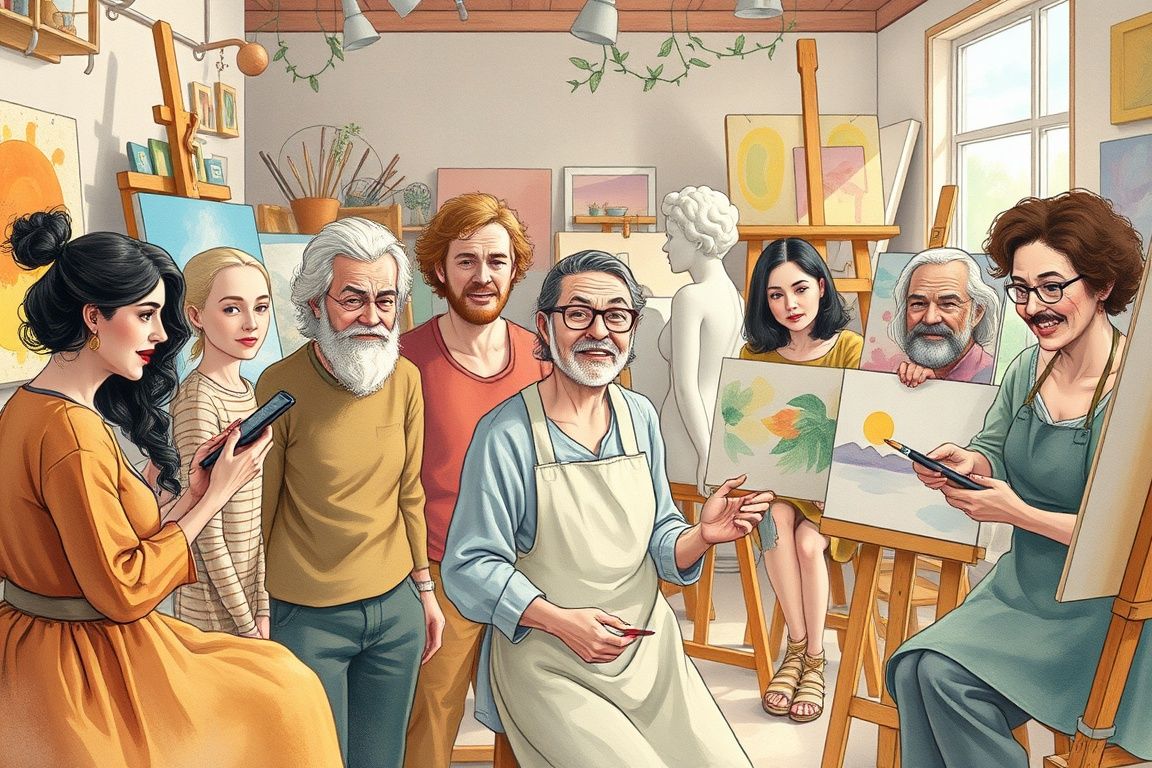Why It’s Worth It
Gain a thorough understanding of significant artistic movements that inform modern practices.
Enhance your creativity by integrating historical techniques into your handmade crafts.
Develop analytical skills to critique art, enriching your perspective and artistic approach.
Your Learning Roadmap
Foundations of Artistic Movements
In this module, students will gain a fundamental understanding of what constitutes an artistic movement, the evolution of art in historical contexts, and the language used to describe art movements. This lays the groundwork for analyzing how these movements shape modern creative practices including handmade crafts. Defining Artistic Movements Historical Contexts and Influences Terminology and Theoretical Perspectives
Impressionism and Post-Impressionism
This module delves into the groundbreaking world of Impressionism and its successor, Post-Impressionism. Students will learn about the innovative methods used by artists to capture light, color, and emotion, and how these movements paved the way for modern art. The module offers insights into the transition from realism to more expressive and subjective representations, setting the stage to understand their impact on contemporary crafts. Overview of Impressionism Techniques and Innovations Transition to Post-Impressionism
Modernist Movements: Cubism, Fauvism, and More
This module focuses on the dynamic shifts in art during the modernist period, spotlighting movements like Cubism and Fauvism. Students will examine how artists challenged conventional perspectives of space, form, and color. The module prepares learners to see the connection between these modernist experiments and their lasting influence on contemporary creative practices and handmade crafts. Cubism: Breaking Forms Fauvism: The Power of Color Exploring Other Modernist Styles
Expressionism and Abstract Expressionism
This module focuses on the journey from Expressionism to the more non-representational Abstract Expressionism. Students will study how artists used color, form, and technique to express intense emotions and inner experiences. The analysis integrates historical developments with discussions on how these movements continue to influence modern creative arts and craft methods. Techniques in Early Expressionism Rise of Abstract Forms Contemporary Abstract Expressionism
Artistic Movements in Handcrafted Arts
In this module, learners will explore the intersection between historical art movements and contemporary handmade crafts. The module highlights case studies where techniques derived from movements like Impressionism and Modernism have been adapted in craftwork. It also encourages creative thinking on integrating art history principles into practical design and craft projects. Integrating Art and Craft Case Studies in Art-Inspired Crafts Innovative Craft Techniques
Interpreting and Critiquing Artworks
This final module focuses on developing the skills necessary to analyze, interpret, and critique art and craft works. Through examining methods of art criticism and historical context analysis, students will learn to form informed opinions. The module also encourages practical application through case studies and interactive exercises, reinforcing how art history informs contemporary creativity. Techniques for Art Analysis Developing a Critical Eye Constructing Informed Critiques
What Users Are Saying
All You Need to Know
Enroll Now!
Learn at your own pace with real-time engagement.
Interactive conversations with an AI assistant get you instant feedback.
Explore the impact of art history on contemporary crafts.
Study renowned art movements and their techniques.
Delve into practical examples and case studies for hands-on learning.
Transform your artistic skills with historical insights applied to craft.

